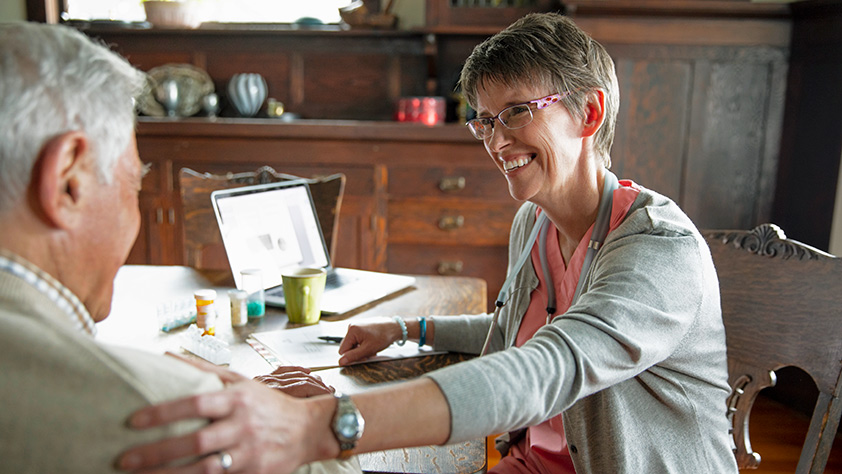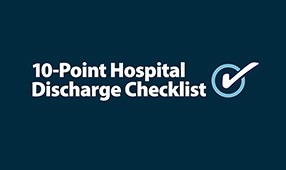Key takeaways
- Caregivers are most often unpaid individuals assisting aging family members.
- Two-thirds of caregivers are female, with an average age of 69.4.
- Paid care can be done in-home or in licensed facilities like assisted living or board and care homes.
- There are many resources that can help you find paid caregivers or facilities for care assistance.
“Caregiver” is a broad term that describes a person who provides varying levels of assistance to a person who needs help with activities of daily living. Caregivers can be paid professionals but most often the term is applied to unpaid individuals, such as a spouse, partner, family member or friend.
According to the National Alliance of Caregiving and AARP, about 34.2 million Americans provided unpaid care to an adult age 50 or older in 2014 (the most recent figures available). The economic value of these services was estimated to be $470 billion, which was almost as much as the total sales of Wal-Mart that year. It’s no surprise that 65% of caregivers are female, with an average age of 69.4.
If you’re an informal, unpaid caregiver for an aging parent or family member, you know all about balancing their escalating needs with those of other family members and your own work and personal responsibilities. At some point, you may feel like you need more comprehensive help.
Use online resources to help guide your search
There are checklists that can help in evaluating the type of care assistance you need. A good place to start is the National Caregivers Library. Another resource is your local Area Agency on Aging (AAA), which can provide lists of home care agencies, along with financial and tax assistance for seniors, transportation, housing and other aging-related topics. To find the AAA nearest to you, call the Eldercare Locator at 800-677-1116, or visit the AAA website.
Determine what type of care is needed
Care needs generally fall into four categories:
- Personal care—bathing, eating, dressing, toileting
- Household chores—shopping, cooking, cleaning
- Emotional support—companionship, conversation, shared activities
- Health care—medication management, physical therapy, medical procedures
You might be able to handle several of these needs in a couple of categories, but if your loved one requires help with most of all of these daily living tasks, a paid caregiver may help a lot. This is particularly true for health care needs. A 2012 AARP Public Policy Institute survey found that 46% of family caregivers are now performing medical and nursing tasks that used to be done only in hospitals. Ask yourself if you would be comfortable administering injections, managing a long list of medications or doing wound care.
Decide where the care will take place
Whether you’re caring for an aging parent in your own home or your parent’s home, opening the door to professional care providers is a big commitment and requires a lot of trust. Your parent may not like the idea of having a stranger in the home.
Be sensitive to your parents’ cultural values and personal preferences. They may have strong opinions on the type of caregiver they’d be comfortable with, so consider gender, ethnic background, language barriers and age. If possible, let your parent help in writing the job description, interviewing and selecting the provider.
You can hire an in-home provider through a home care agency or directly on your own. The National Association for Home Care & Hospice has an online Agency Locator with a database of more than 33,000 agencies nationwide. If you’d prefer the hands-on control that comes from hiring directly, you can find candidates by asking friends and colleagues, or through social networks and religious groups. If you go this route, you’ll need to do more due diligence, including running background checks, calling multiple references and conducting in-depth interviews.
For more comprehensive care, you might consider a large assisted living community or a small residential care home, also called a board and care home. Both types of facilities offer varying levels of care services at different price points. In many board and care homes and in some assisted living facilities, on-site hospice care may be available, which avoids having to transfer your loved one to another facility for end-of-life care.
As with in-home caregivers, do plenty of research on assisted living facilities, because they vary quite a bit in quality and general ambiance. In addition to obvious assessments like cleanliness, staff qualifications and proximity to your own home, you’ll want to trust your gut instinct in evaluating the appropriateness of a particular community.
Caregiving can be a rewarding experience
The Pew Research Center found that 88% of those who helped their parents financially, with housework, or personal care say it’s rewarding. Just one-third of unpaid caregivers say it’s stressful.
As the U.S. population ages, more and more adults are transitioning into family caregiving arrangements. With enough support, it can be a positive experience for all. But if caregiving becomes a burden, and finances allow, bringing in a professional caregiver may provide healthy benefits to the entire family.












